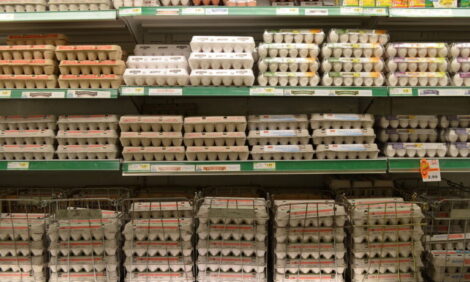



Further Evaluation of Nonfeed Removal Methods for Molting Programs
P. E. Biggs, M. E. Persia, K. W. Koelkebeck, and C. M. Parsons, Department of Animal Sciences, University of Illinois - Published by Poultry Science.Abstract
The objective of this study was to evaluate several nonfeed removal methods compared with feed removal for induced molting of laying hens. An experiment was conducted using 576 Dekalb White hens (69 wk of age) randomly assigned to 1 of 8 dietary treatments. Two of these treatments consisted of feed removal for 10 d followed by ad libitum access to a 16% CP, corn-soybean meal diet or a 94% corn diet for 18 d.
The other 6 treatments provided ad libitum access for 28 d to diets containing 94% corn, 94% wheat middlings (WM), 71% WM: 23% corn, 47% WM: 47% corn, 95% corn gluten feed, and 94% distillers dried grains with solubles (DDGS). At 28 d, all hens were fed a laying hen diet (16% CP), and production performance was measured for 40 wk.
The 2 feed removal treatments resulted in total cessation of egg production within 6 d. Egg production of hens fed the 94% WM, 71% WM: 23% corn, corn, corn gluten feed, and 47% WM:47% corn diets all decreased to 6% or less by d 12, 16, 19, 20, and 28, respectively. Egg production of hens fed DDGS never decreased below 18%.
Body weight loss ranged from 10% (DDGS) to 26% (10-d feed removal), with the other treatments being similar at 17%. No consistent differences were observed among treatments throughout the 40-wk postmolt period for egg production, egg specific gravity, egg weight, egg yield, or feed efficiency. No differences were observed among feed removal treatments versus several nonfeed removal treatments for ovary and oviduct weights and blood heterophil:lymphocyte ratios during the molt period.
In addition, interactive social behaviors were not different throughout the molt period between hens fed the 94% WM and those deprived of feed for 10 d. Our results indicate feeding WM, corn, corn gluten feed, and WM:corn diets are effective nonfeed removal methods for molting laying hens.
The study is published in Poultry Science - Volume 83, April 2004, Number 5
Source: Poultry Science - April 2004









